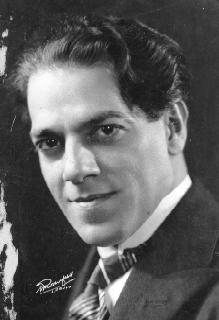
String Quartet No. 10 is one of a series of seventeen works in the genre by the Brazilian composer Heitor Villa-Lobos, and was written in 1946. A performance lasts approximately 23 minutes.
History
Villa-Lobos composed his Tenth Quartet in Rio de Janeiro in 1946. It was first performed by the Quarteto de São Paulo in Paris on 12 February 1950. The score is dedicated to Mindinha (Arminda Neves d'Almeida), the composer's companion for the last 23 years of his life. [1]
Analysis
The quartet consists of four movements:
- Poco animato
- Adagio
- Scherzo (Allegro vivace)
- Molto Allegro
The formal structure of the first movement is derived from the classical sonata-allegro form, and has three subjects. [2]
Cyclic procedures are used to promote unity across the four movements. A violin arpeggio flourish from the end of the fourth bar of the first movement, for example, is developed extensively in the Adagio, and the prominent repeated chords of the first movement return in the scherzo and, in slower rhythmic values, in portions of the finale. [3]
Discography
Chronological, by date of recording.
- Heitor Villa-Lobos: String Quartets Nos. 3, 10 and 15. Danubius Quartet (Gyöngyvér Oláh [Quartets 3 and 10], Judit Tóth [Quartet 15] and Adél Miklós, violins; Cecilia Bodolai, viola; Ilona Ribli, cello). Recorded at the Rottenbiller Street Studio in Budapest, 15–19 June and 1–2 July 1992. CD recording, 1 disc: digital, 12 cm, stereo. Marco Polo 8.223393. A co-production with Records International. Germany: HH International, Ltd., 1993.
- Heitor Villa-Lobos: Quartetos de cordas 7, 8, 9, 10, 11. Quarteto Amazônia. CD recording, 2 discs: digital, 12 cm, stereo. Barcelona: Discmedi D.L., 2000.
- Also issued as part of Villa-Lobos: Os 17 quartetos de cordas / The 17 String Quartets. Quarteto Bessler-Reis and Quarteto Amazônia. CD recording, 6 sound discs: digital, 12 cm, stereo. Kuarup Discos KCX-1001 (KCD 045, M-KCD-034, KCD 080/1, KCD-051, KCD 042). Rio de Janeiro: Kuarup Discos, 1996.
- Villa-Lobos: String Quartets, Volume 5. Quartets Nos. 5, 10, 13.
Cuarteto Latinoamericano (Saúl Bitrán, Arón Bitrán, violins; Javier Montiel, viola; Alvaro Bitrán, cello). Recorded at the Sala Blas Galindo of the Centro Nacional de las Artes in Mexico City, 24–28 January 2000. Music of Latin American Masters. CD recording, 1 disc: digital, 12 cm, stereo. Dorian DOR-93211. Troy, NY: Dorian Recordings, 2000.
- Reissued as part of Heitor Villa-Lobos: The Complete String Quartets. 6 CDs + 1 DVD with a performance of Quartet No. 1 and interview with the Cuarteto Latinoamericano. Dorian Sono Luminus. DSL-90904. Winchester, VA: Sono Luminus, 2009.
- Also reissued (without the DVD) on Brilliant Classics 6634.
Filmography
- Villa-Lobos: A integral dos quartetos de cordas. Quarteto Radamés Gnattali (Carla Rincón, Francisco Roa, violins; Fernando Thebaldi, viola; Hugo Pilger, cello); presented by Turibio Santos. Recorded from June 2010 to September 2011 at the Palácio do Catete, Palácio das Laranjeiras, and the Theatro Municipal, Rio de Janeiro. DVD and Blu-ray (VIBD11111), 3 discs. Rio de Janeiro: Visom Digital, 2012.
References
- ^ Villa-Lobos, sua obra 2009, p. 105.
- ^ Salles 2010, p. 1608.
- ^ Daniels 1966.
Cited sources
- Daniels, Arthur. 1966. "Heitor Villa-Lobos: String Quartet No. 10. New York: Southern Music Publishing Company, 1963". Notes, Second Series 22, no. 3 (March): 1108.
- Salles, Paulo de Tarso. 2010. "Quarteto de Cordas No. 10 de Villa-Lobos: densidade temática e releiruta da forma-sonata". Anais do XX Congresso da ANPPOM 2010: 1608–15.
- Villa-Lobos, sua obra. 2009. Version 1.0. MinC / IBRAM, and the Museu Villa-Lobos. Based on the third edition, 1989.
Further reading
- Béhague, Gerard. 1979. Music in Latin America: An Introduction. New Jersey: Prentice-Hall.
- Béhaque, Gerard. 1994. Heitor Villa-Lobos: The Search for Brazil's Musical Soul. Austin: Institute of Latin American Studies, University of Texas at Austin.
- Béhague, Gerard. 2003. Villa-Lobos, Heitor: String Quartets, Cuarteto Latinoamericano. [review] Latin American Music Review / Revista de Música Latinoamericana 24, no. 2 (Autumn–Winter): 293–94.
- Estrella, Arnaldo. 1978. Os quartetos de cordas de Villa-Lobos, second edition. Rio de Janeiro: Museu Villa-Lobos, Ministério da Educação e Cultura.
- Farmer, Virginia. 1973. "An Analytical Study of the Seventeen String Quartets of Heitor Villa-Lobos". DMA diss. Urbana: University of Illinois at Urbana-Champaign.
- Gilman, Bruce. 1999. "Enigma de vanguardia", translated by Juan Arturo Brennan. Pauta: Cuadernos de teoría y crítica musical 17, no. 69 (January–March): 29–34.
- Kraehenbuehl, David. 1957. "George Rochberg: String Quartet, 1952. (Society for the Publication of American Music, 37th Season, 1956.) New York: Society for the Publication of American Music; distr.: Carl Fischer, 1957; Toch, Ernst. Dedication. For string quartet or string orchestra, with optional bass part. New York: Mills, 1957. Heitor Villa-Lobos: String Quartets, Nos. 4, 7, and 12. New York: Associated Music Publishers, 1956; Ernest Gold: String Quartet No. 1. (Society for the Publication of American Music, 37th Season, 1956.) New York: Society for the Publication of American Music; distr.: Carl Fischer, 1957". Notes 15, no. 1 (December): 147.
- Macedo Ribeiro, Roberto. 2000. "A escrita contrapontística nos quartetos de cordas de Heitor Villa-Lobos". In Anais do I Colóquio de Pesquisa de Pós-Graduação, edited by Marisa Rezende and Mário Nogueira, 71–76. Rio de Janeiro: Universidade Federal do Rio de Janeiro (UFRJ) (Escola de Música).
- Tarasti, Eero. 2009. "Villa-Lobos's String Quartets". In Intimate Voices: The Twentieth-Century String Quartet, vol. 1: Debussy to Villa-Lobos, edited by Evan Jones, 223–55. Eastman Studies in Music 70. Rochester, NY: University of Rochester Press. ISBN 978-1-58046-322-5; ISBN 978-1-58046-229-7; ISBN 978-1-58046-340-9.
- Villa-Lobos, sua obra: Programa de Ação Cultural. 1972. Second edition. Rio de Janeiro: MEC, DAC, Museu Villa-Lobos.
- Villa-Lobos, sua obra. 2009. Version 1.0. MinC / IBRAM, and the Museu Villa-Lobos. Based on the third edition, 1989.